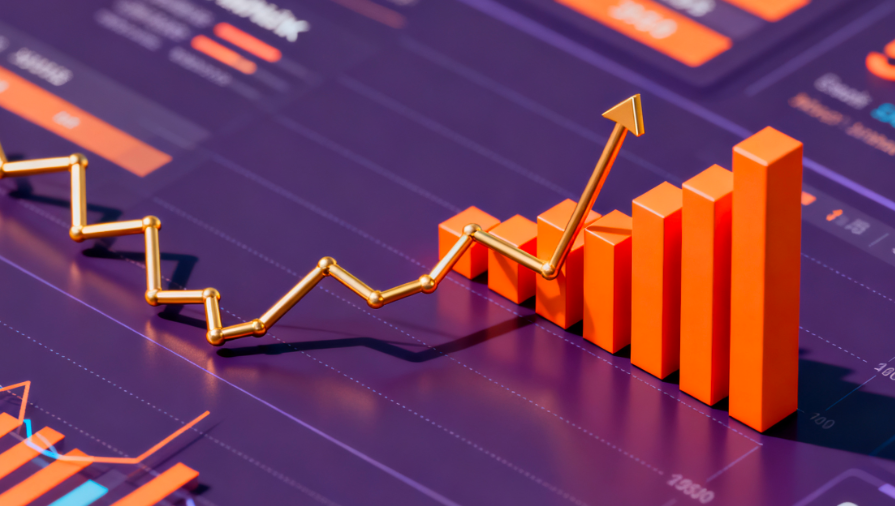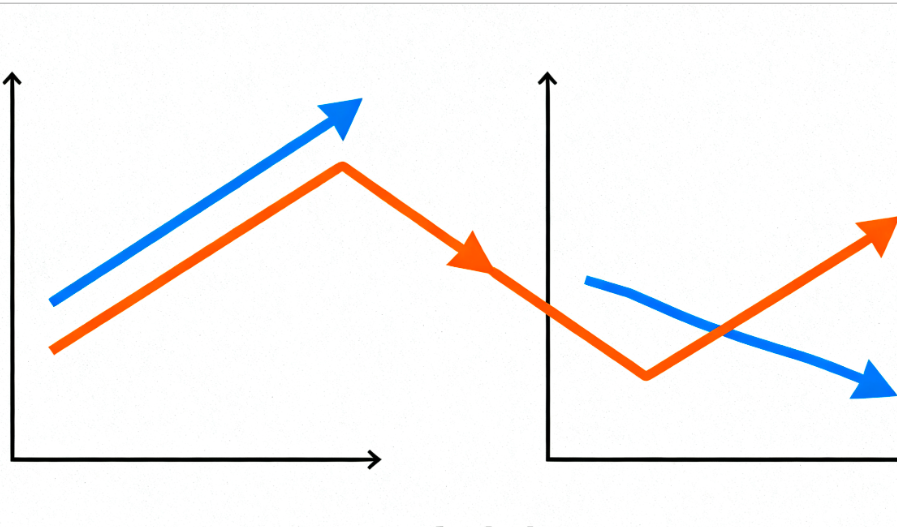
The cryptocurrency flash crash severely dampened the “Uptober” rally. The flash crash on October 11 led to the liquidation of over $19 billion in leveraged positions, with some altcoins plummeting by 50% to 75% within minutes, casting a shadow over the month’s optimistic start—which had seen soaring market sentiment and several major assets reaching all-time highs.
After hitting a record high of $126,300 on October 6, Bitcoin traded around $121,000 on the morning of October 10 (U.S. time), before briefly touching a low of $107,000 in the afternoon. Although Ethereum’s last all-time high was several weeks earlier (reaching $4,955 on August 24), it was trading near $4,800 before the crash and fell to as low as $3,500. At the lowest point of the crash, Bitcoin dropped 13% intraday, Ethereum fell 20%, and SOL declined 25%. Some long-tail altcoins experienced declines of up to 50% to 75% during this crash.
As written by Thad Pinakiewicz of Galaxy Research, “High leverage, thin order book depth, and a macroeconomic news trigger sparked this crash.” The automatic deleveraging (ADL) on exchanges exacerbated the movement, which, in some cases, restricted market makers’ short positions and forced them to significantly withdraw liquidity. Ultimately, the market stabilized on Friday evening and rebounded notably last week.
However, risk appetite has weakened due to slight softness in microchip stocks, hawkish rhetoric from Fed Governor Christopher Waller (despite his previously dovish stance), underperformance of regional banks, and comments from President Trump regarding his talks with Russian President Vladimir Putin. Bitcoin is currently trading at its lowest levels since June. Meanwhile, both gold and silver prices have hit record highs, surpassing $4,300 per ounce and $54 per ounce, respectively.
Galaxy’s View:
The market entered October with high sentiment, but after mid-month, the foundations of the cryptocurrency and stock markets have appeared more fragile. Bitcoin prices are down 16% from the October 6 all-time high of $126,200, and the S&P 500 is down 1.85% from its October 8 record high of 6,735. Most other cryptocurrencies have underperformed Bitcoin. The risk-off sentiment in October was further reflected in gold and silver prices reaching all-time highs and the 10-year U.S. Treasury yield falling below 4% for the second time in over a year.
Perhaps the most notable factor behind the risk-off sentiment is concern about whether the AI-driven capital expenditure boom is entering a bubble. Respected investor Paul Tudor Jones told CNBC last week that the current investment landscape “feels like 1999” and that “all the ingredients are in place for some kind of blow-off top.” Others have criticized the circularity of some announced AI deals—where chip manufacturers acquire GPUs while taking equity in hyperscalers, or vice versa—raising concerns about stock prices being driven by isolated transactions. However, this AI wave is driven by well-funded, large, investment-grade companies, not merely speculative frenzy or circularity. Examples include the sale of Aligned Data Centers to a consortium led by BlackRock and Nvidia for $40 billion, Google’s massive deals with OpenAI and Coreweave, Meta’s recent $1.5 billion investment in a new data center in Texas, Microsoft’s deal with Nscale, and more. These are substantial investments by well-capitalized incumbents for the future, not speculators chasing fantasies.
While the U.S. government strongly supported the internet in the 1990s, by 2025, its support for AI will be even more significant. According to our analysis, in the 1990s, the U.S. government invested only a few hundred million dollars annually in internet-related R&D through programs like the High-Performance Computing and Communications Initiative and the Next Generation Internet. Even including the E-Rate program (which cost about $2.25 billion but was funded by telecommunications fees rather than the federal budget), federal investment accounted for only about 0.1-0.2% of annual federal spending (or 0.03% of GDP). In contrast, by 2025, the federal government itself will invest $3.3 billion annually in AI R&D, plus $45 billion in semiconductor and infrastructure incentives under the CHIPS Act, totaling about 0.7% of the federal budget (or 0.15-0.2% of GDP)—roughly 7 times the annual internet spending of the 1990s. While the U.S. government primarily viewed internet development as an economic and educational opportunity in the 1990s, by 2025, it has explicitly stated that the AI race is a geopolitical priority, launching a national “AI Initiative” and framing it from a near-existential geopolitical perspective. We believe that competition between nations makes AI development resemble a new space race rather than another internet bubble. It could even escalate into a new “Manhattan Project.” In 1944, spending on the Manhattan Project peaked at 4-5% of annual federal spending (about 0.85% of GDP). It is no exaggeration to say that AI could evolve into an arms race on this scale—with Artificial General Intelligence (AGI) potentially at stake, and which country achieves it first determining the global balance of power for decades to come. In summary, compared to the government’s support for the internet in the 1990s, its stance toward AI today is significantly more aggressive and likely to become even more so.
Given AI’s vast potential, much like the rise of the internet, its impact on markets cannot be quantified as it continues to develop and permeate the global economy. While 2000 did experience the “dot-com bubble” burst, that was merely a local peak—even those who bought at the S&P 500’s peak would have achieved substantial returns if they held until today. The key point is that major structural innovations lead to booms, and booms lead to bubbles. But if the boom is justified, even with a bumpy road, the outcome is usually positive. We believe AI’s impact on the economy is still in its very early stages, and realizing its ultimately game-changing future will require more capital expenditure, energy utilization, and infrastructure construction.
Cryptocurrencies have, to some extent, been caught in this anxiety and are themselves under market pressure. Recently, the October 11 flash crash dealt a significant blow to asset prices, creating a short-term pricing mechanism characterized by fragility and silence. But over the past few months, enthusiasm for Digital Asset Companies (DATs) has also waned, with the emerging industry’s stocks generally trending lower. We don’t know if “the bubble has burst” (as BitMine Chairman Tom Lee said last Thursday), but possible investor fatigue has contributed to the stock decline. As stock prices fall, these companies’ ability to raise capital diminishes, thereby weakening the structural and price-insensitive cryptocurrency purchasing power that can be deployed.
Nonetheless, we still believe the market landscape for digital assets remains quite optimistic. Bitcoin, as digital gold, remains well-positioned to capitalize on fundamental doubts about government fiscal and monetary prudence. Meanwhile, the rise of tokenization and stablecoins, coupled with an extremely favorable regulatory outlook in the U.S., should boost the prospects of other important digital assets like Ethereum and SOL.
As the old saying goes, “The market climbs a wall of worry.” We are indeed continuing to move upward, and the worries never disappear. Does this mean we are on the right path? Perhaps so—but if Uptober is only like this, the team responsible for “Novembull” promotion might have their work cut out for them.
















